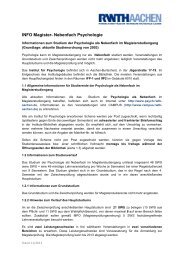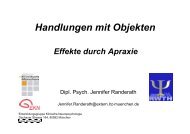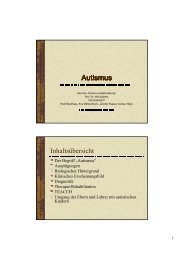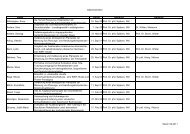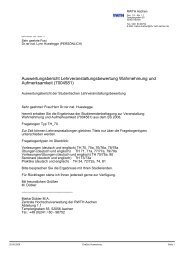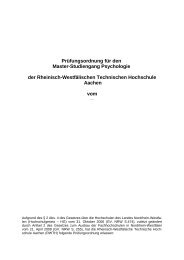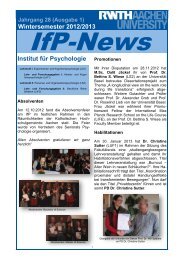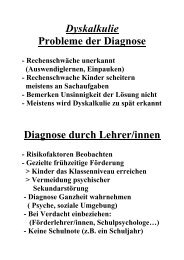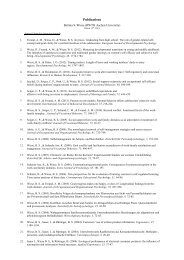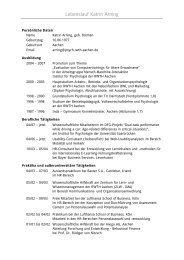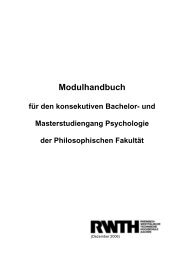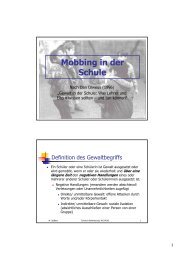1 Effects of Sensorimotor Transformations with Graphical Input ...
1 Effects of Sensorimotor Transformations with Graphical Input ...
1 Effects of Sensorimotor Transformations with Graphical Input ...
You also want an ePaper? Increase the reach of your titles
YUMPU automatically turns print PDFs into web optimized ePapers that Google loves.
1. Introduction<br />
Tool use in modern work <strong>of</strong>ten challenges the human motor system, especially when the<br />
execution and observation <strong>of</strong> motor skills are spatially separated, and when transformations<br />
are in effect. The use <strong>of</strong> computer input devices is only one example in this respect. More<br />
elaborate tools are used for instance in laparoscopic surgery, Virtual Reality or teleoperation.<br />
Recent studies (Kunde, Müsseler & Heuer, 2008, Müsseler, Kunde, Gausepohl & Heuer,<br />
2008) give evidence that distal action effects (the moving cursor on the display) play the more<br />
essential role in controlling tools than proximal action effects (the moving hand). We aim to<br />
further the understanding <strong>of</strong> cognitive processes that mediates the usability <strong>of</strong> input devices.<br />
In two experiments we evaluate user behaviour towards changes in motor space and/or visual<br />
space. We will question, what is more important for controlling input devices successfully, to<br />
supervise one’s own hand or the cursor movement on the display? As a consequence changes<br />
in either motor space or visual space should have a predominant influence on performance.<br />
The findings will help to understand the constraints <strong>of</strong> the acquisition and application <strong>of</strong> tool<br />
transformations.<br />
<strong>Sensorimotor</strong> transformations <strong>with</strong> input-output devices differ in two aspects. Firstly,<br />
the input device manipulation (proximal effect) can or cannot correspond to the cursor action<br />
(distal effect). For example, most input devices (e.g. mouse, digitizer tablet, touchpad,<br />
displacement joystick or flystick) transform hand movements into cursor movements. The<br />
transformation is kept rather simple, i.e. the relationship between the moving hand and the<br />
cursor movement is obvious to the user. A considerable amount <strong>of</strong> studies (for an overview<br />
see Douglas & Mithal, 1997) reported a very efficient usage <strong>of</strong> motion-transforming input<br />
devices. Other input devices are rotary (e.g. trackball) or force-sensitive (e.g. isometric<br />
joystick or spacemouse). The transformation between applied rotation or force is less<br />
obviously connected to the cursor movement. Consequently, the user has more difficulties to<br />
2



